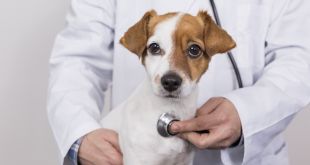Your pet is acting weird for the past few weeks, and you are inconclusive about it. Observation is the primary approach to any unusual behavior in pets. You can get a thorough examination of the dog from an animal expert or check with the vet. There is always a possibility of a physical and psychological issue with your fur friend.
Identifying the psychological problems is a challenge. Fear and anxiety are normal and adaptive behavior. When your dog seems emotionally low for an extended period, it is probably alarming. Profound fear in pets leads to poor health, and potentially dangerous behavior calls for immediate medical attention.
You start the process of identifying the signs by closely observing your pet. Look for the signs of aggression, restlessness, shyness, and phobia in your pet.
Clinically proven Six signs your dog is living with fear:
1. Physical signs:
Primary symptoms can be trembling, tail-tucking, hiding, resisting activities, and passive behavior towards the family members. These are evident signs that prove the dog feels fear. it is the result of some trauma. Your highly active and happy-looking pet may hide into a shell and exhibit different physical signs.
2. Physiological and psychological signs:
Secondary and panic level symptoms are panting, wandering restless, whizzing out, escaping from the leash, potential damage to motor activity. When the constant fear becomes a phobia, it leads to bigger problems. You must seek medical help for these symptoms, as if unattended may lead to irreversible damage to your pet.
3. IBS signs:
Sympathetic autonomic nervous system activity like loose motions are also the signs of fear in animals. When the bowels change due to hidden worry about something it results in anxiety and stress. So, when your dog is eating fine and has diarrhea with vomiting, it is pointing towards inner fear.
4. Self-damage signs:
Mild to moderate signs include self-destructive acts like biting or scratching own body. It is a semi-dangerous situation as; the dog feels restless and struggles to cope with his/her fears, due to which they self-harm.
When you can notice bruises, scratch marks on the body of the pet, and bite lesions on limbs, it is an alarming situation. Seek medical attention instantly not just to treat the wounds but also to support the dog emotionally.
5. Unnoticed signs:
Some symptoms go unnoticed, like the licking of lips, tail chasing, and circling. The reason for lip licking can be harsh weather, dehydration due to the sunny climate is a possibility. However, if it happens on great weather days and frequently, it is a sign of fear in your furry friend.
6. Mental displacement:
Displaced behavior is one sign of a confused and scared dog. When you are calling your pet or giving any command – the animal refuses to listen, ignores, or looks distracted. Your four-legged friend is stressed out, and due to anxiety expresses the confusion state.
Fear – Phobia – or combination
Sometimes the fear is because of constant changes in environment or routine or people. But, sometimes the fear inculcates because of any incident like any traumatic experience like the loss of a loved one (dog’s favorite person in the family or dog’s child). The fear may start after any traumatic incident that impacts the psychology of the dog.
You can notice submissive or aggressive behavior in rescue dogs. Animals that come from shelter houses bring a lot of history viz. poor living style, no access to food and normal environment, the bad owner who beat or abuse the animals and exposure to any distressing events.
Causes of fear in dogs
Change in the behavior of the dog is related to the change in their environment. The onset of anxiety may trigger slowly or instantly. When a pup comes to your house the foremost reason for fear is coming to the new place. Your tiny canine may feel uncomfortable amongst new people, new house, new routine – basically everything new.
It becomes overwhelming for any creature to experience an emotional upheaval on entering a new place. Introducing unfamiliar or scary experience are a trigger to confusion and stress in animals. Sudden addition to a place where the dog lived alone for 8-10 years then moves to a family with more animals around is a challenge for settling down.
Social and climatic factors are also the primary cause of anxious attitudes towards any human being. Your quadruped friend may struggle to adjust to freezing weather if they are tropical beings or vice-versa.
Separation anxiety is a common reason for many types of phobias in dogs. Change of owners, moving homes or shelter houses serval times, negligence by any owner result in separation anxiety in dogs. They feel the need to shy away, hide in a crate, or not respond to the new owner every time.
Any illness or physical pain is also one of the causes of fear in dogs. Chronic pain due to injury or arthritis is something to mention. Many older dogs turn inactive. They tend to ignore the commands of the owner when they experience joint pain, difficulty in staying active and hates dog walks.
The wrap
Once you identify the fear and the cause – you can start the right treatment. There will be a combination of approaches – patient, compassion, medication, and physiotherapy are few to mention. Speak to your vet and plan the best possible treatment for your fur friend.

 DogExpress
DogExpress


















 in Chandigarh, India.
in Chandigarh, India. 
